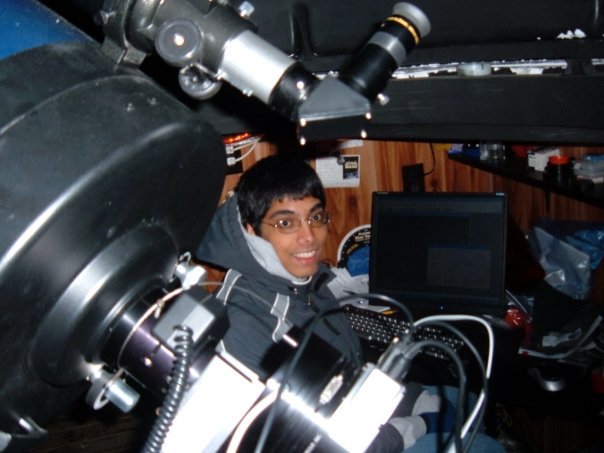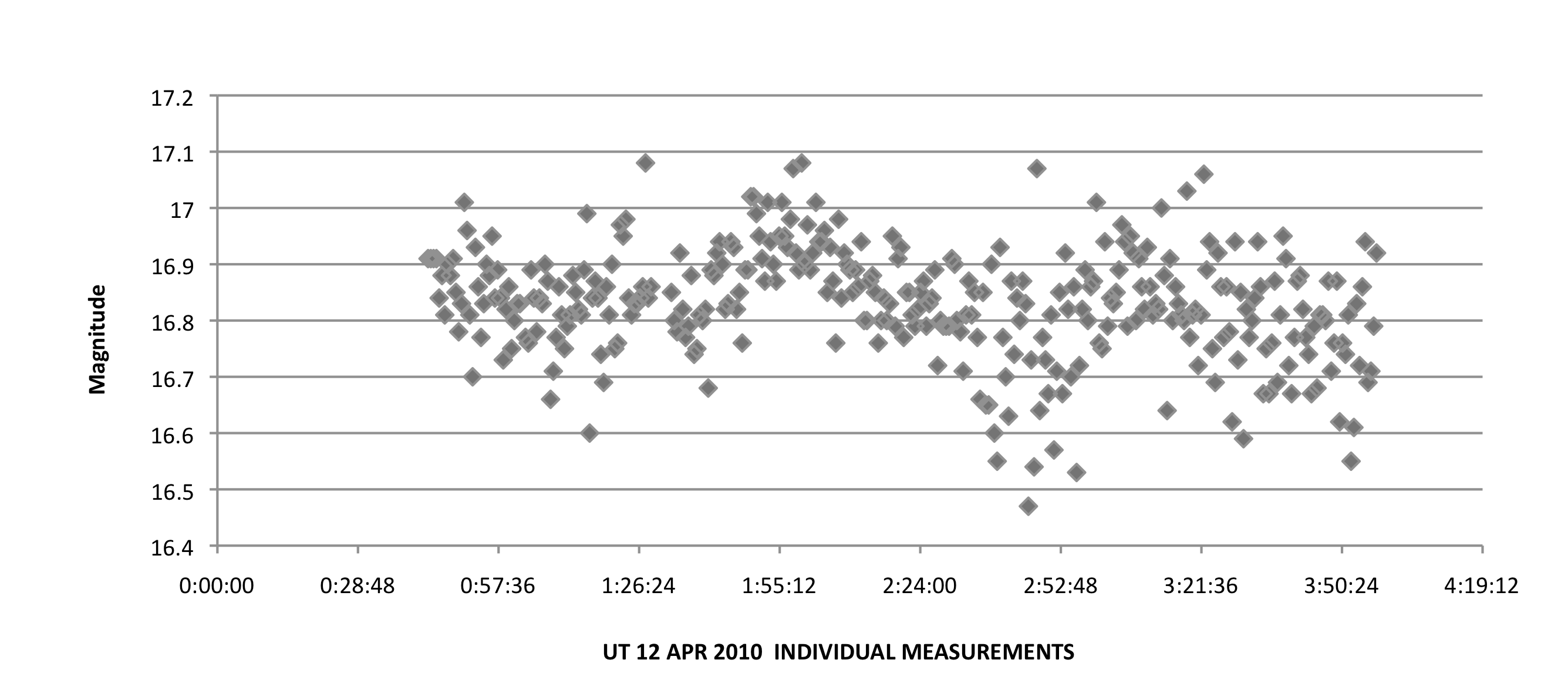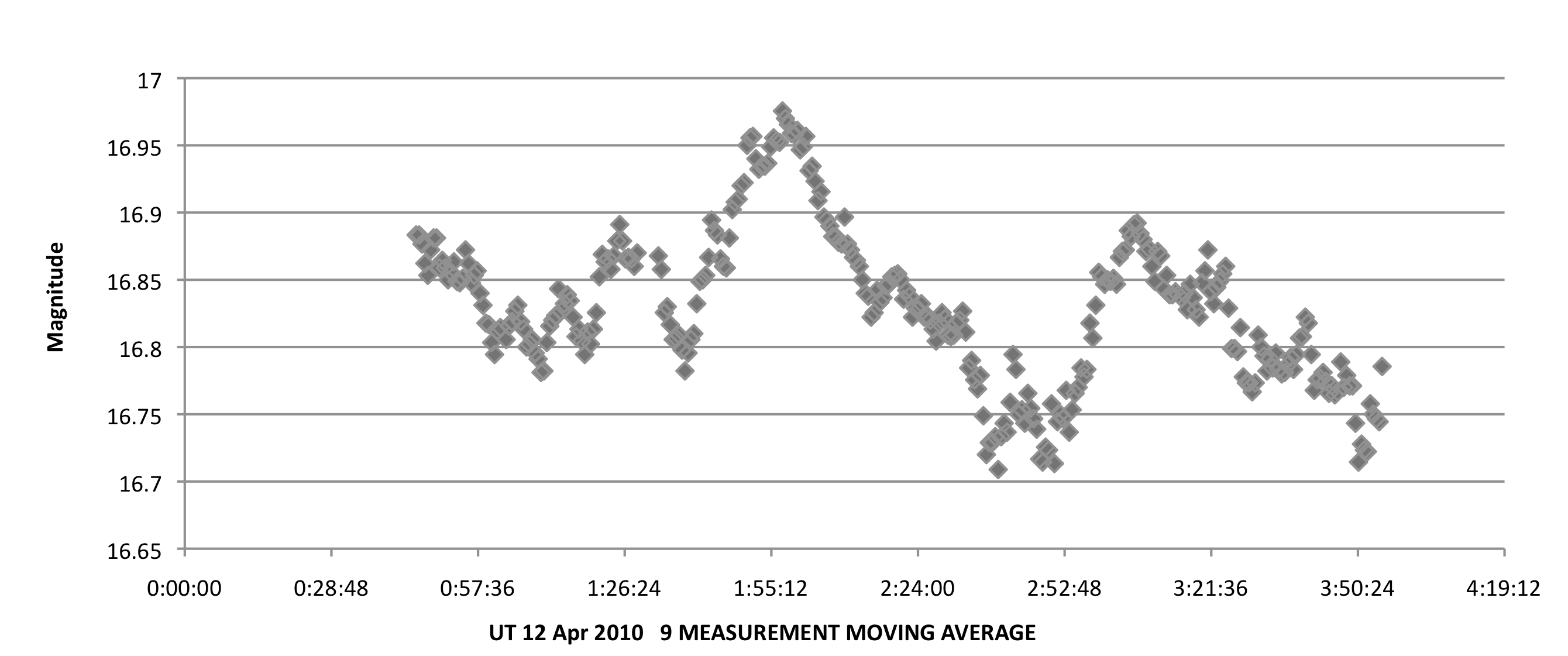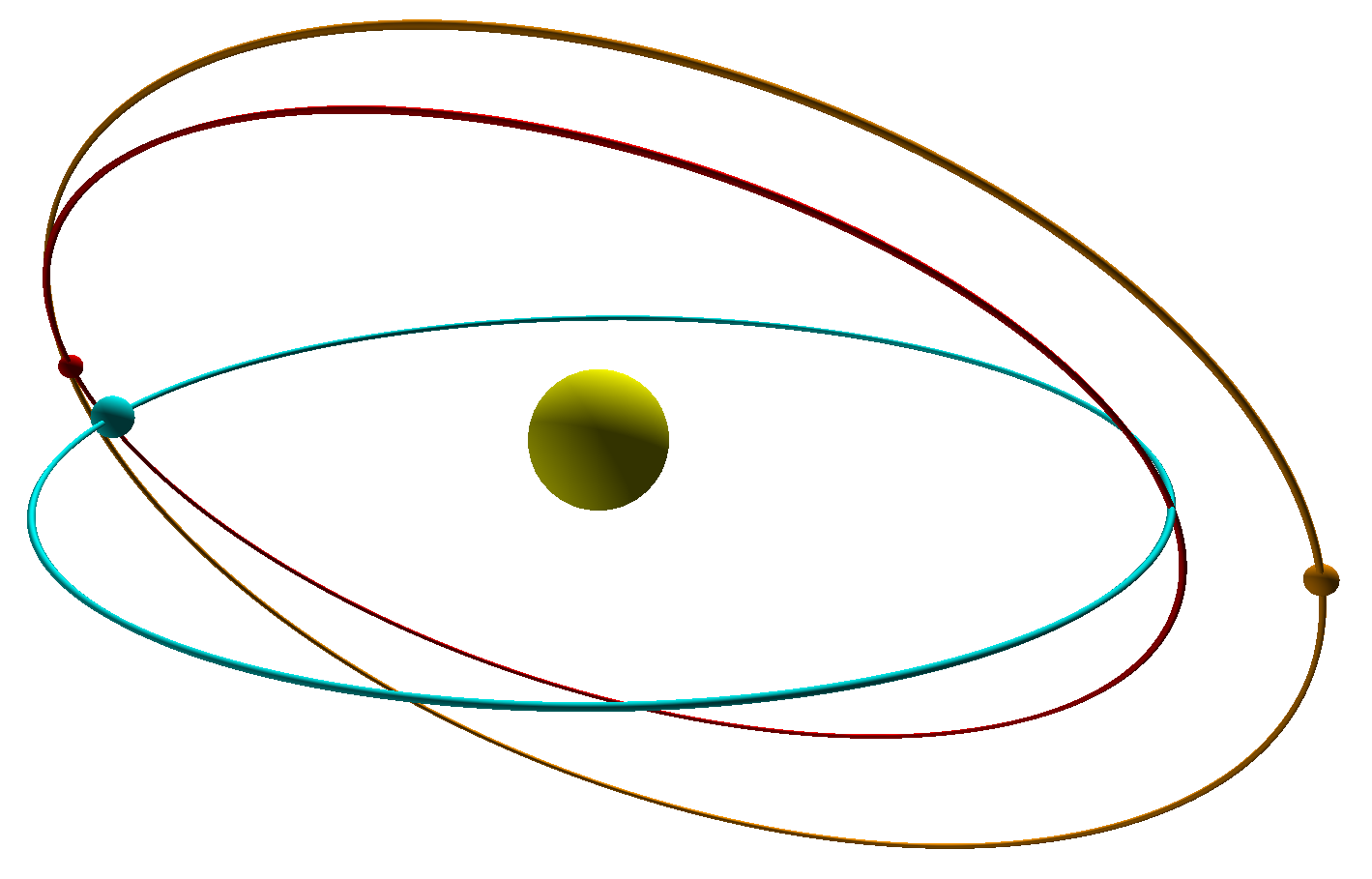
Orbit determination is the process of calculating an orbit of an object.
I conducted orbit determination using a program I wrote in Python and VPython while at the Summer Science Program (SSP) in the summer of 2009. For my Senior Project, I slightly modified my program to improve it. I was able to successfully work on two different asteroids during my project.
My project uses the Gaussian Method of Orbit Determination. Gauss developed this method in the early 1800s, and demonstrated its power by recovering the asteroid (also known as a dwarf planet now) Ceres. Ceres had been observed for a few days by its discoverer Giuseppe Piazzi, but it was lost after it disappeared behind the Sun. Gauss used thes relatively few observation points to calculate the orbit of Ceres and recover it.
When conducting orbit determination, the goal is to determine the six orbital elements. This is done by calculating the position vector of the body (in this case the position of the asteroid relative to the Sun) and the velocity vector of the body. There is only one orbit that satisfies these. These are calculated using three observation points (during each observation we collect the position of the asteroid in the sky (R.A. and Dec., which is later converted to the position from the Sun), and exact time). The cool thing about this method is that the observations don’t have to be spread out throughout the whole orbit (which would be common sense), but can be essentially from any three points in the orbit. This is one reason why Gauss was so successful.
Like the planets, asteroids orbit around the Sun, and have elliptical orbits where the Sun is one of the two foci of the ellipse. Asteroids in the Asteroid Belt have orbits that are roughly circular (meaning that their orbits’ eccentricities are almost equal to 1), and with low inclinations. However, asteroids outside the Asteroid Belt can have many types of odd orbits.
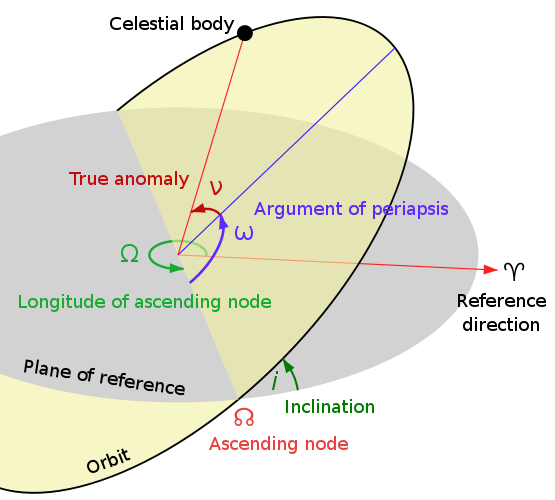
All orbits, including those of asteroids, can be described uniquely by the six orbital elements (the above image from Wikipedia is greatly helpful in visualizing these):
- Semimajor Axis: Half the length of the longest axis in the ellipse of the orbit.
- Eccentricity: Shape of the ellipse. Values closer to 0 result in shapes that are more squished, while values closer to 1 are shapes that are more circular.
- Inclination: How tilted the orbit is from the reference plane. This reference plane when working with asteroids is usually the ecliptic plane (plane of the Solar System where the orbits of the planets lie).
- Longitude of the Ascending Node: How much the orbit is rotated from the reference direction, usually the vernal point. In other words, it is where the asteroid “ascends” out of the reference plane in its orbit.
- Argument of Periapsis or Perihelion: Where the closest location of the asteroid to the central body (i.e. the Sun) is in reference to the Longitude of the Ascending Node.
- Mean Anomaly: Where the asteroid is located in the orbit at a certain time.
These orbital elements are calculated when determining the orbit of an asteroid.
Asteroid 163132
Asteroid 163132 is a Near Earth Asteroid. This is a picture of the orbit I calculated using my program. My orbit is in orange, while the accepted one calculated by JPL is in red. The shape of the orbit very closely matches the actual orbit during the observation time, where the red object and the blue Earth are located. Also notice that the asteroid is not in the correct location. This is a problem in my calculation of one of the six orbital elements (Mean Anomaly) that I was unable to figure out.
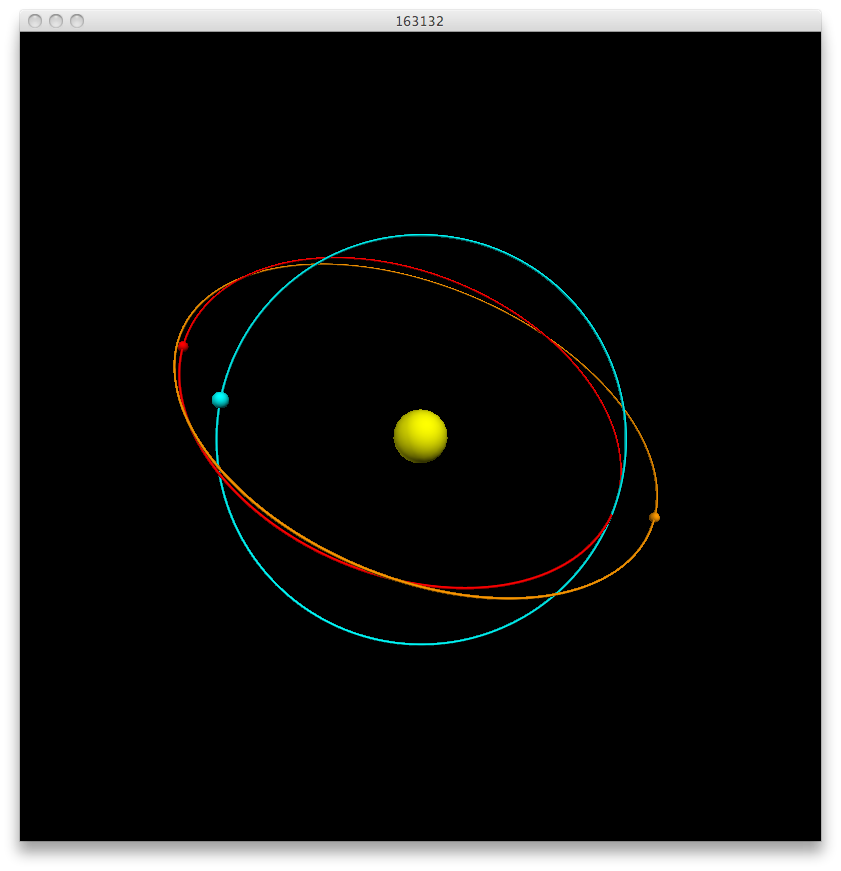
Asteroid 2000 CO101
Asteroid 2000 CO101 is also a Near Earth Asteroid. Here is a picture of the orbit I calculated with my program. As you can see, the shape of the orbit more closely matches that of the accepted. Again, my asteroid is not in the correct location due to an error in my calculation of the Mean Anomaly.
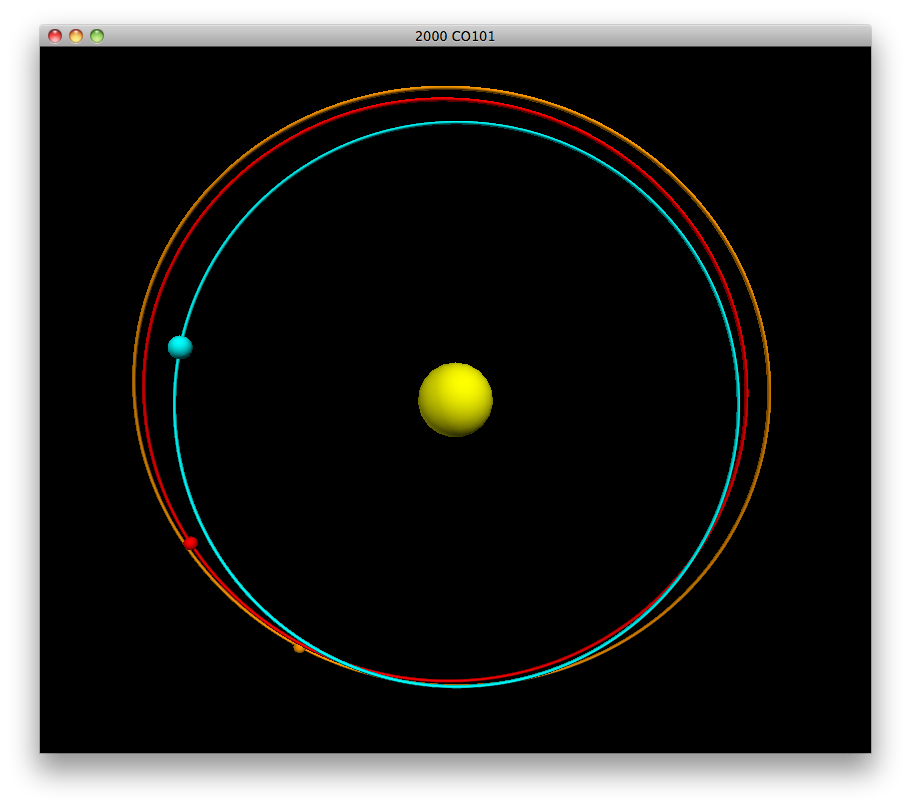
I also researched some causes for the discrepancy in the shape of the orbits from the actual orbit. Likely, the best fix would be to collect more observations in an effort to improve the orbit. I'm also not accounting for some phenomena like the asteroid’s velocity and its effect on the light it reflects.
Perhaps the differing results may be due to the Gaussian method itself. I’ve read that the Gaussian method works best at low inclinations, a reason why Gauss was very successful with Ceres, since it is in the Asteroid Belt. This may account for the vast differences in the accuracy for the above two asteroids. 163132 has a high inclination, whereas 2000 CO101 does not.


